Food & Drink
How Sacré Sucré’s Owners Turned a Macaron Obsession Into a Pâtisserie
One look at the pastry case, and the artistry of self-taught owners Manuel Sanchez and Dane Thibodeaux is more than evident.
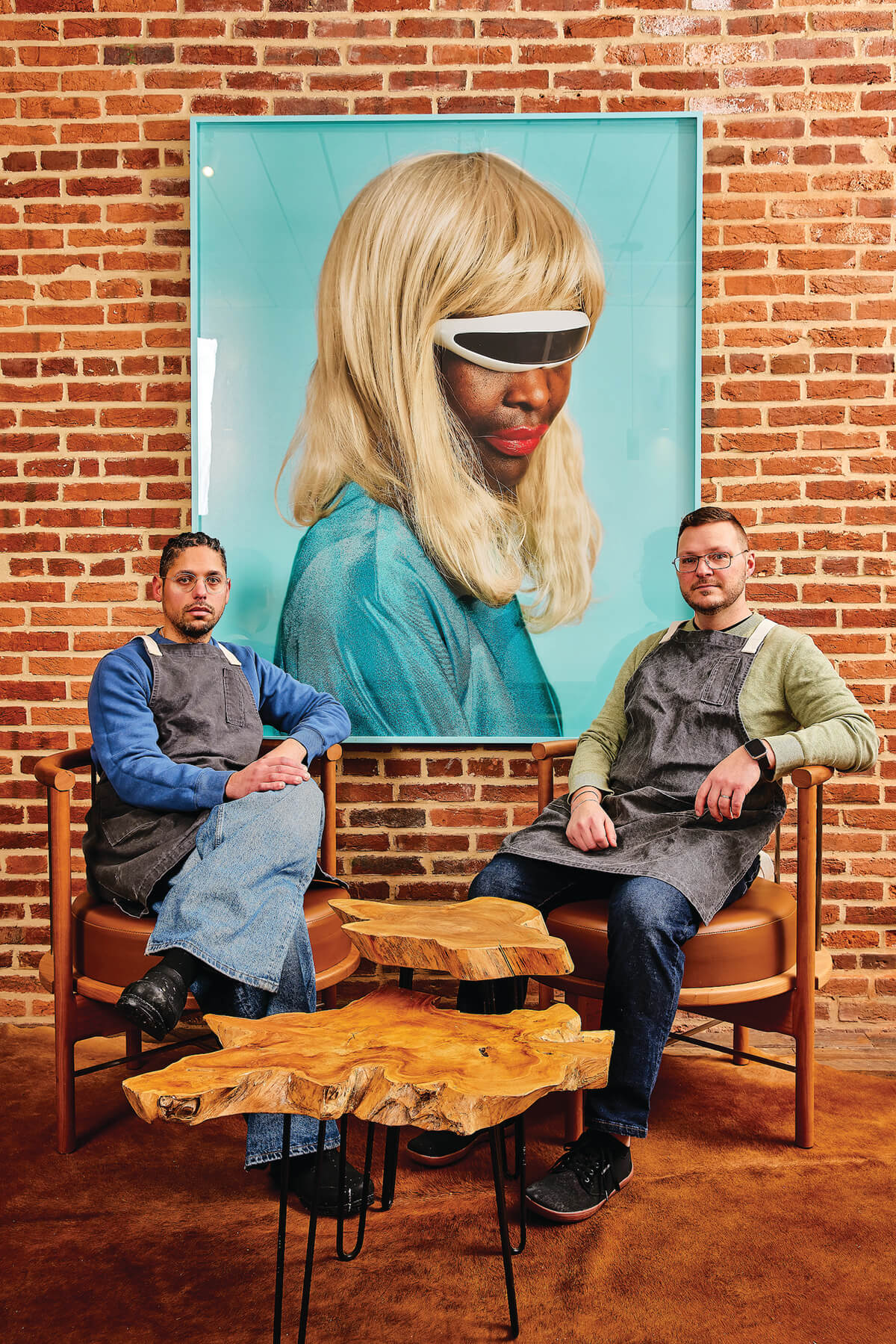
Two hours before dawn in the second-floor kitchen of their Fells Point pâtisserie, Sacré Sucré, Manuel Sanchez and Dane Thibodeaux are piping pâte à choux and making caramel. Thibodeaux has already cut and decorated the opera cakes: strata of cake, ganache, buttercream, and chocolate layered like a study in geology. The room is quiet and kept purposefully cool, the windows still dark.
On this Wednesday in March, it’s surprisingly peaceful for a pastry kitchen, but then much about Sacré Sucré is surprising. That a pastry shop of this caliber exists in a Baltimore harbor rowhouse. That it’s owned and operated almost entirely by two local men. And that those men are self-taught, having learned their craft not at a Parisian école, but through cookbooks and YouTube.
Sanchez and Thibodeaux opened their shop in January, after moving the pâtisserie from Fleet Street to Fell Street, half a mile south. Before that Sanchez, 36, worked as a computer engineer and Thibodeaux, 42, as a hotel manager. They first fell in love with each other in Baltimore and then, on a trip to France, with macarons, the dainty French meringue sandwich cookies. That love turned into a hobby and then a fixation—as the two, unable to find Paris-quality macarons at home, learned how to make the delicacies themselves.
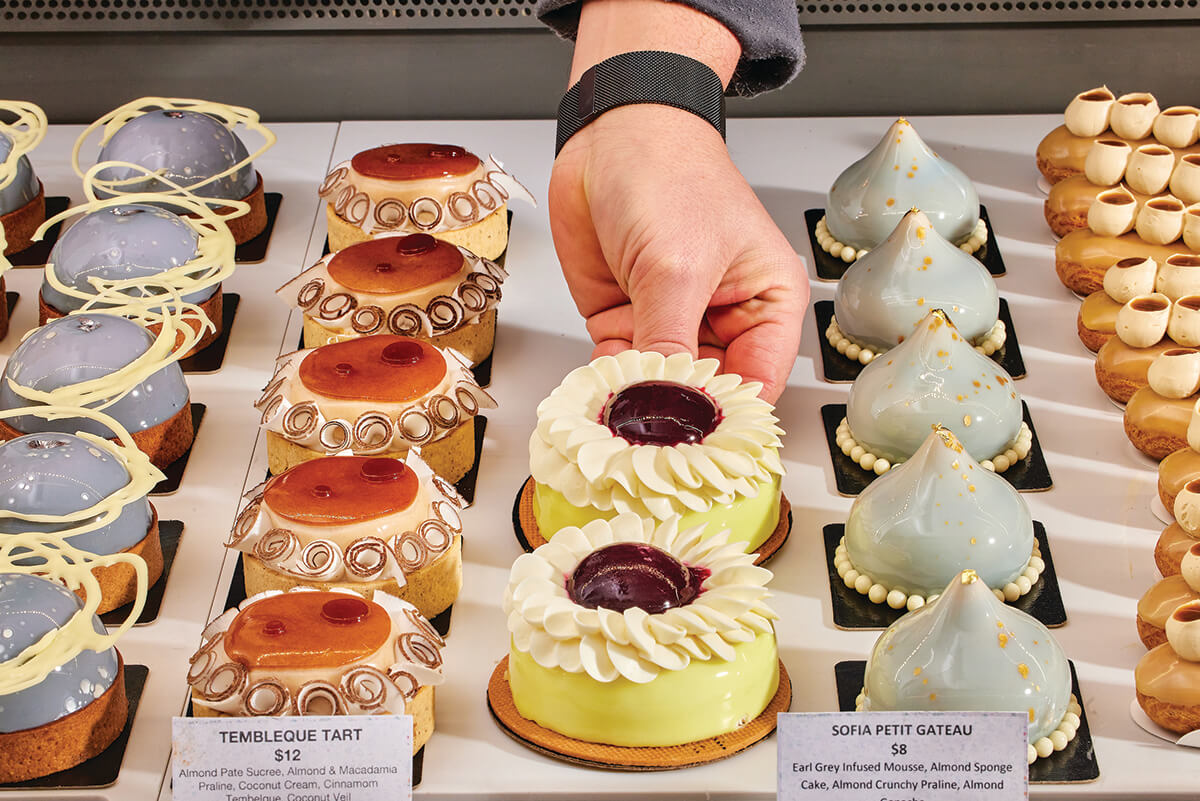
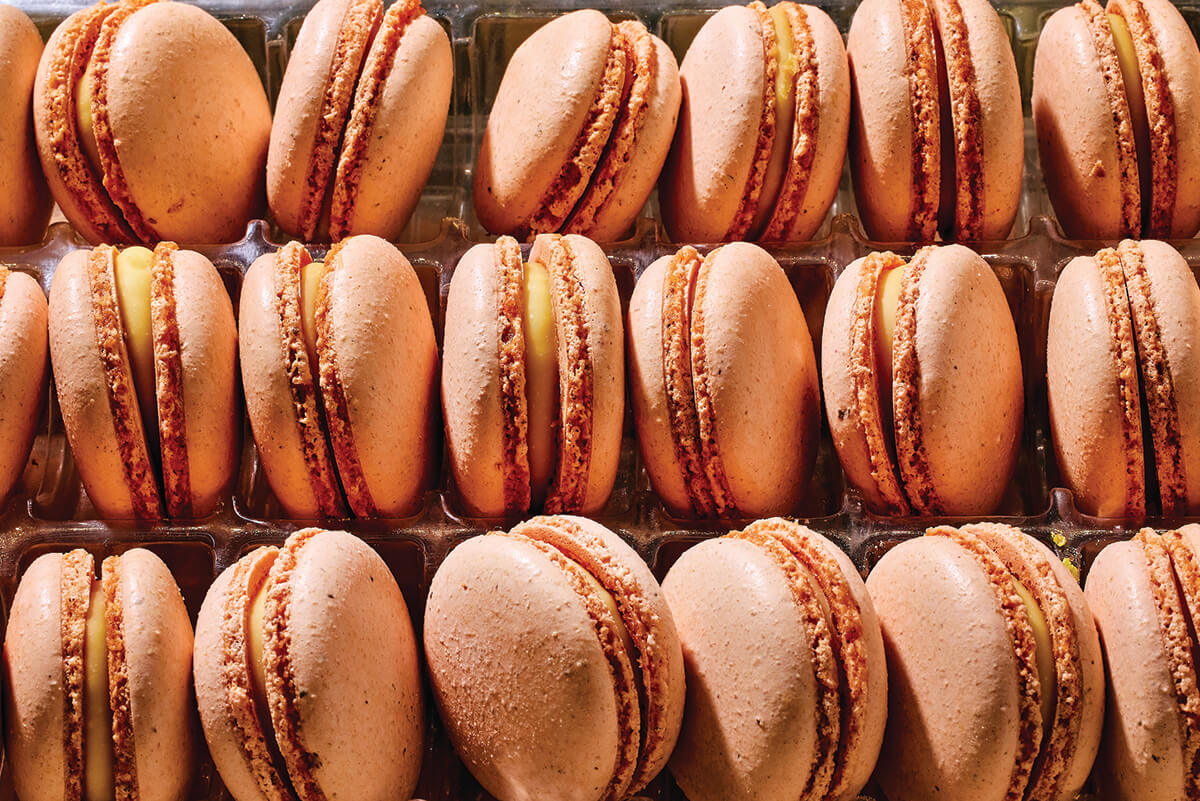
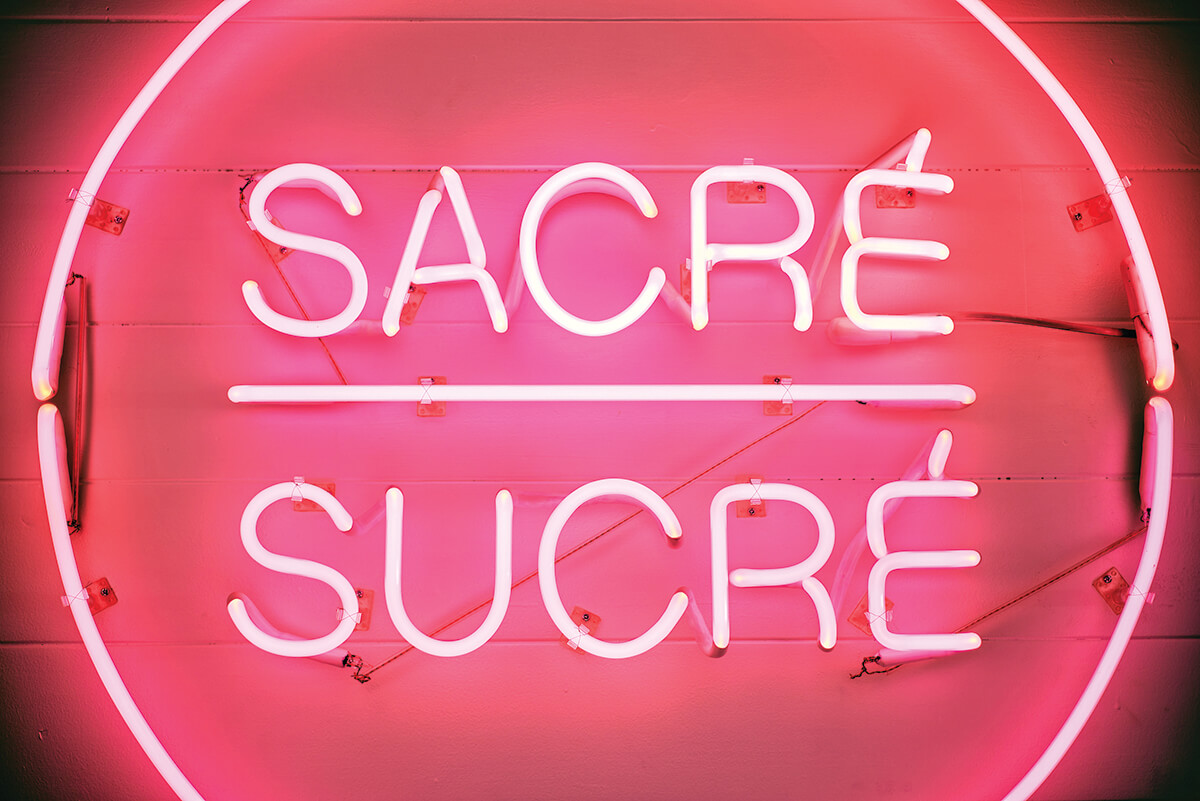
Sacré Sucré’s second floor is impressive: A wooden staircase ascends to a light-filled, updated kitchen outfitted with a state-of-the-art cooler and proofer; a three-tier deck oven; a mixer the size of a washing machine; counters with KitchenAid mixers; chemistry class cabinets stocked with colorings, gelling agents, aromas, and spices; and speed racks loaded with bags of chocolate, couvertures (a kind of tempered chocolate), tart shells, and components of the various pastries.
“You get better with the years,” says Sanchez as he dips frozen orbs of cherry-blossom mousse into a mauve mirror glaze. “I look back at 2018 and think, this looks so bad.”
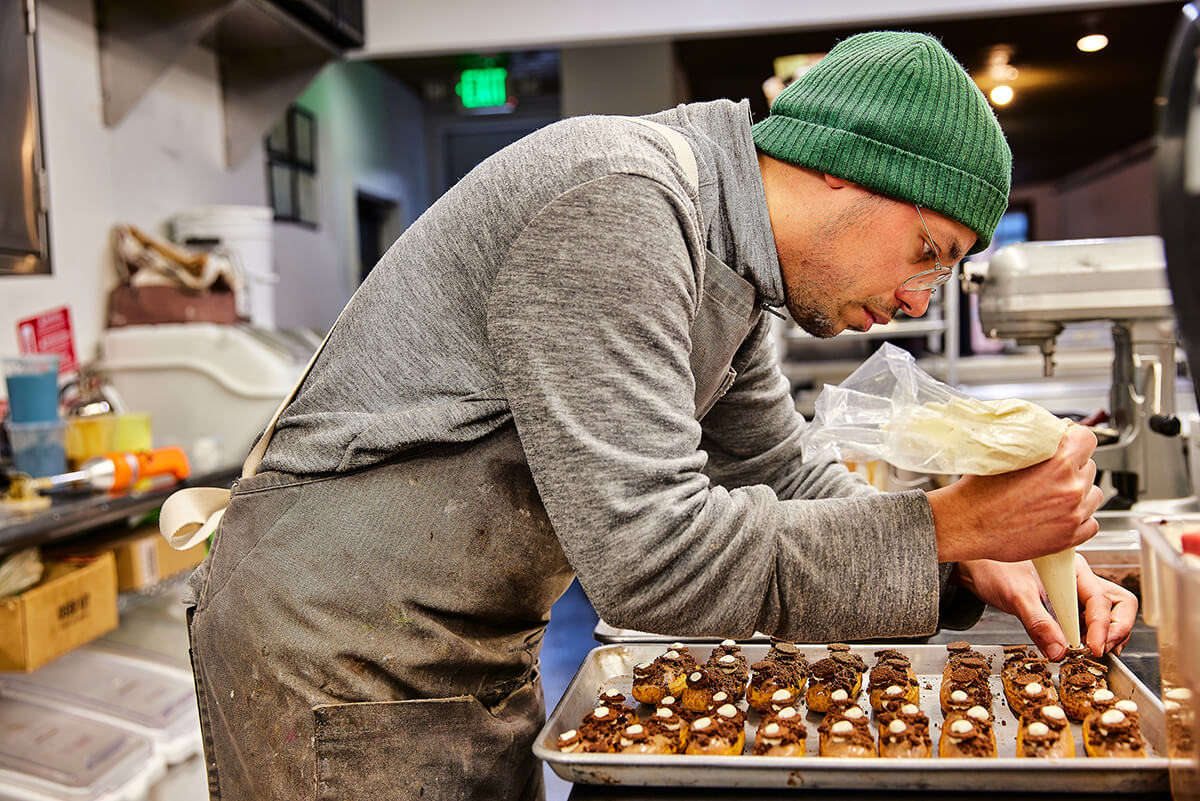
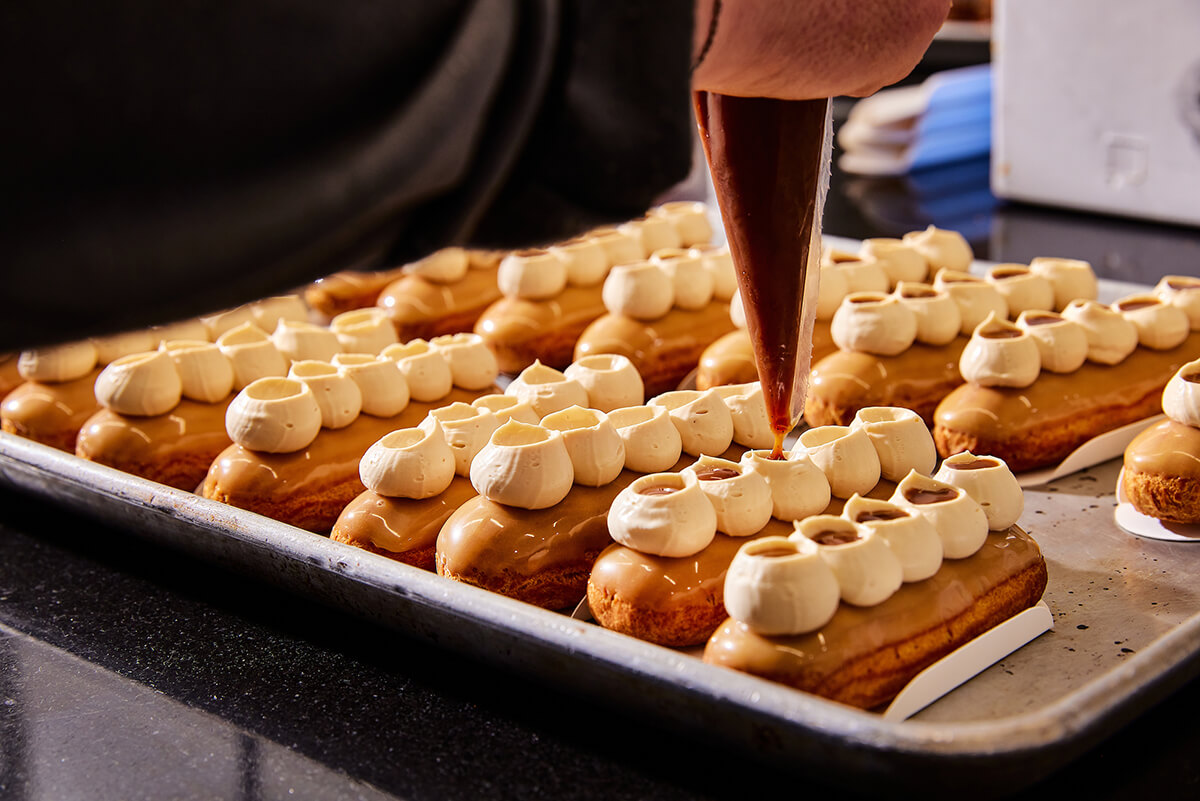
For him, as with so many of us, Instagram functions as both archive and inspiration.
“Manny is the master piper; I don’t pipe,” says Thibodeaux, who’s splattering silver powder across the tops of the pale-blue petits gâteaux called Planèt Bleu like an Abstract Expressionist let loose in a kitchen. After fanning the cakes dry, he lowers concentric rings of white chocolate, then lays tiny bits of edible silver on the pinnacles of the confections.
“People think it’s aluminum foil,” says Sanchez. “It does look like it,” says Thibodeaux, who finishes decorating a tray of chocolate éclairs, then goes downstairs to make himself and Sanchez espresso drinks, a break he takes once every morning during production. (Another aspect of being a pâtissier means monitoring not only sleep-deprivation, but caffeine and sugar consumption.)
By this point, light has crept through the windows and many of the morning’s pastries are finished, then loaded onto sheet trays and into the carefully calibrated refrigerator. The Viennoiseries, made with laminated dough, are now proofed and baked in the deck oven. They include croissants, pain au chocolat, almond croissants, the Swedish-style cinnamon rolls called kanelbullar, Breton-style Kouignamann, and, perhaps best of all, monkey bread—those crazy buns made of dough twirled into spires, dusted with cardamom sugar, and drizzled with caramel. They look less like pastries than miniature churches designed by Antoni Gaudí.
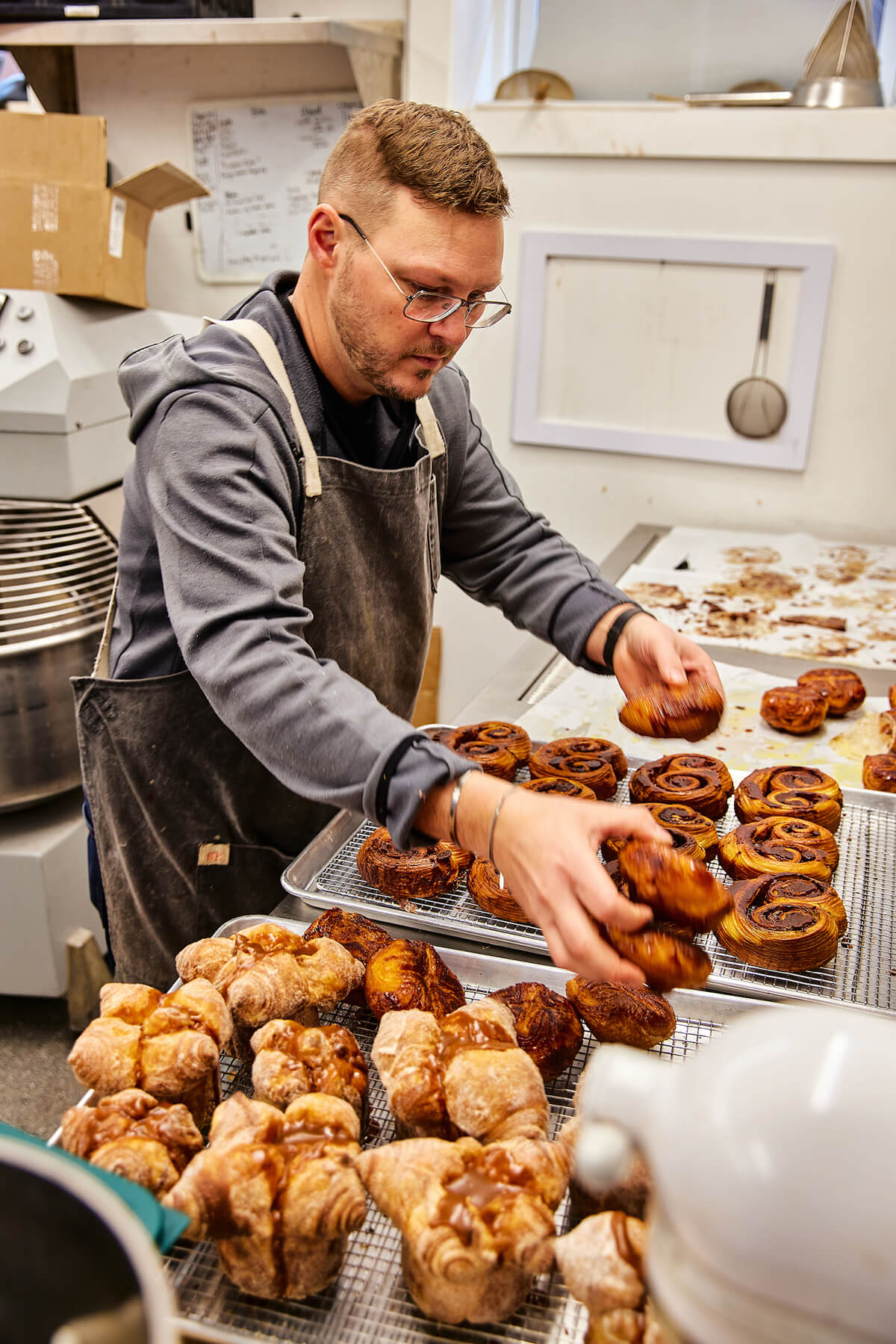
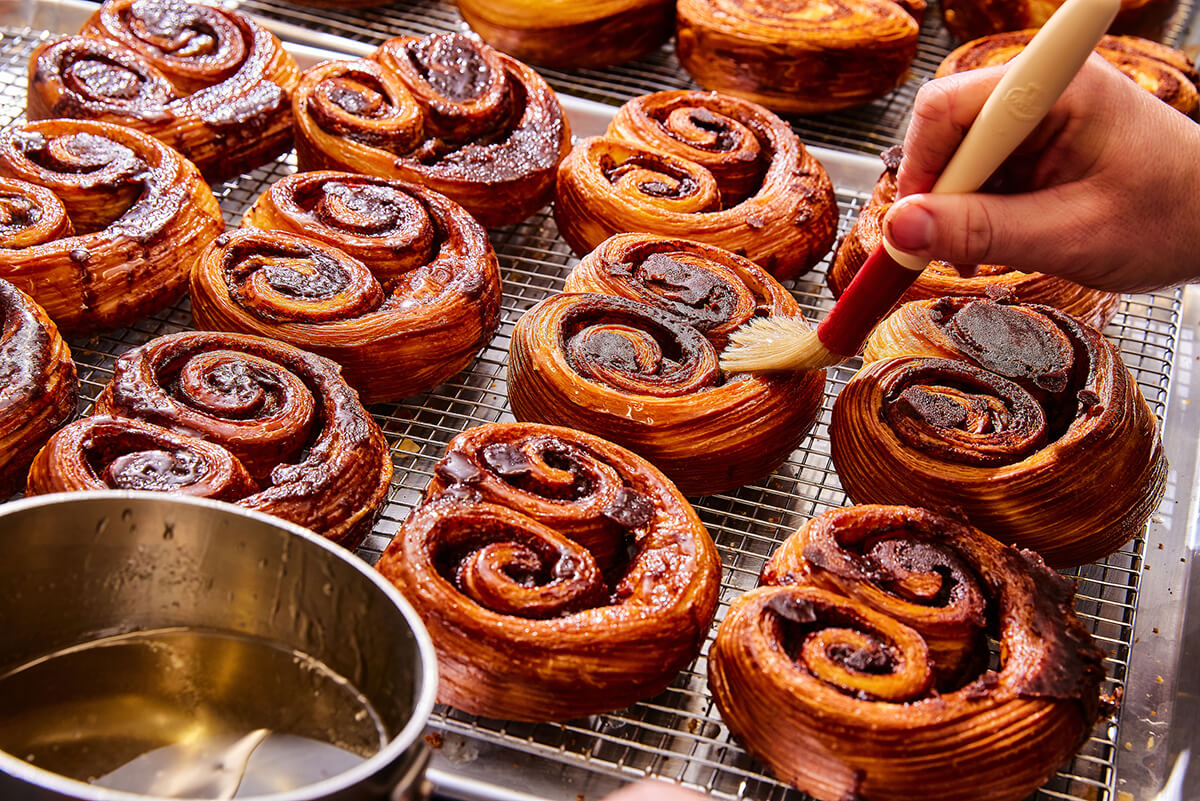
As Sanchez pipes vanilla mascarpone cream onto lime-green matcha cakes for the matcha tiramisu, one of the new spring items, he describes a recent trend in pastry that calls for manual assembly rather than the flexible silicone molds that have long been standard practice.
“Cédric Grolet uses a lot of free-hand and piping,” he says, referencing the French pastry chef who, along with Cronut-inventor Dominique Ansel, is at the top of the pastry game. (Grolet’s Instagram has over 10 million followers.) “The hand-forming provides a more human touch and differentiates between pastry chefs, as everyone uses the same molds. We’re transitioning.”
They’ve also moved toward using natural colors and flavors, and less sugar, not only in the pastries—which are fruit-forward and appreciably less sweet than other versions—but in the macarons that have been a staple at Sacré Sucré since the beginning.
That beginning was in 2011, when Sanchez and Thibodeaux first met in Hampden. Sanchez, who is from Puerto Rico and has a master’s degree in computer security from Johns Hopkins, had landed a job in Baltimore.
“Government cyber stuff,” he says. Thibodeaux,a native of Louisiana, had gone to Johnson & Wales in Rhode Island for culinary school—which is distinct, it should be said, from pastry—and was working at Mt. Washington Conference Center. “When we started living together, Dane used to cook all the time,” says Sanchez of Thibodeaux, who started cooking with his family as a child.
The pair, who married in 2015, began cooking together, making pasta and jams, and everything they ate at home was made from scratch. Shortly after they married, Sanchez took a job in Northern California. On weekends, the couple started making pastries and collecting cookbooks.
“And then we traveled to France,” says Sanchez, “and we had our first real macaron.” “In the Lyon marketplace, walking around, not even thinking about the pastries,” adds Thibodeaux. “We didn’t go there for the pastries; we went there for the wine.”
That macaron, a fig macaron, “blew us away,” says Thibodeaux, and became the catalyst for a macaron obsession—not just consuming them but learning how to make them. “We couldn’t figure out how they put figs into a macaron,” says Thibodeaux. “And that started [the questions]: What is a macaron? How do you make a macaron?”
Back in California, they started baking. “I failed like 10 times with that [first] recipe. And then it just became a challenge,” says Sanchez. “And then I started bringing them to my coworkers. I didn’t know it at the time, but they were macaron fanatics. Science and computer people, they get into certain things.” Sanchez’s co-workers not only loved the macarons, but started buying them, too.
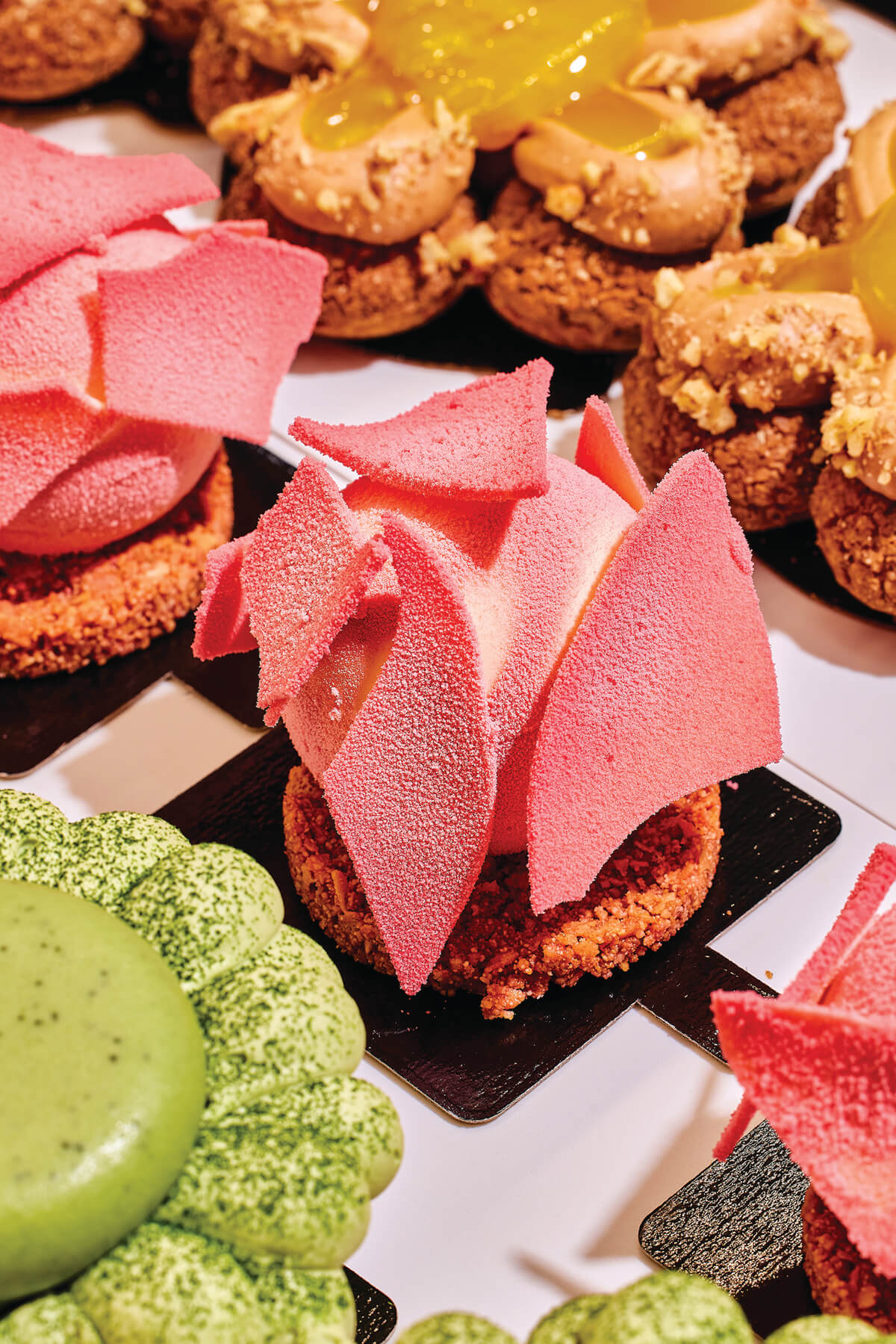
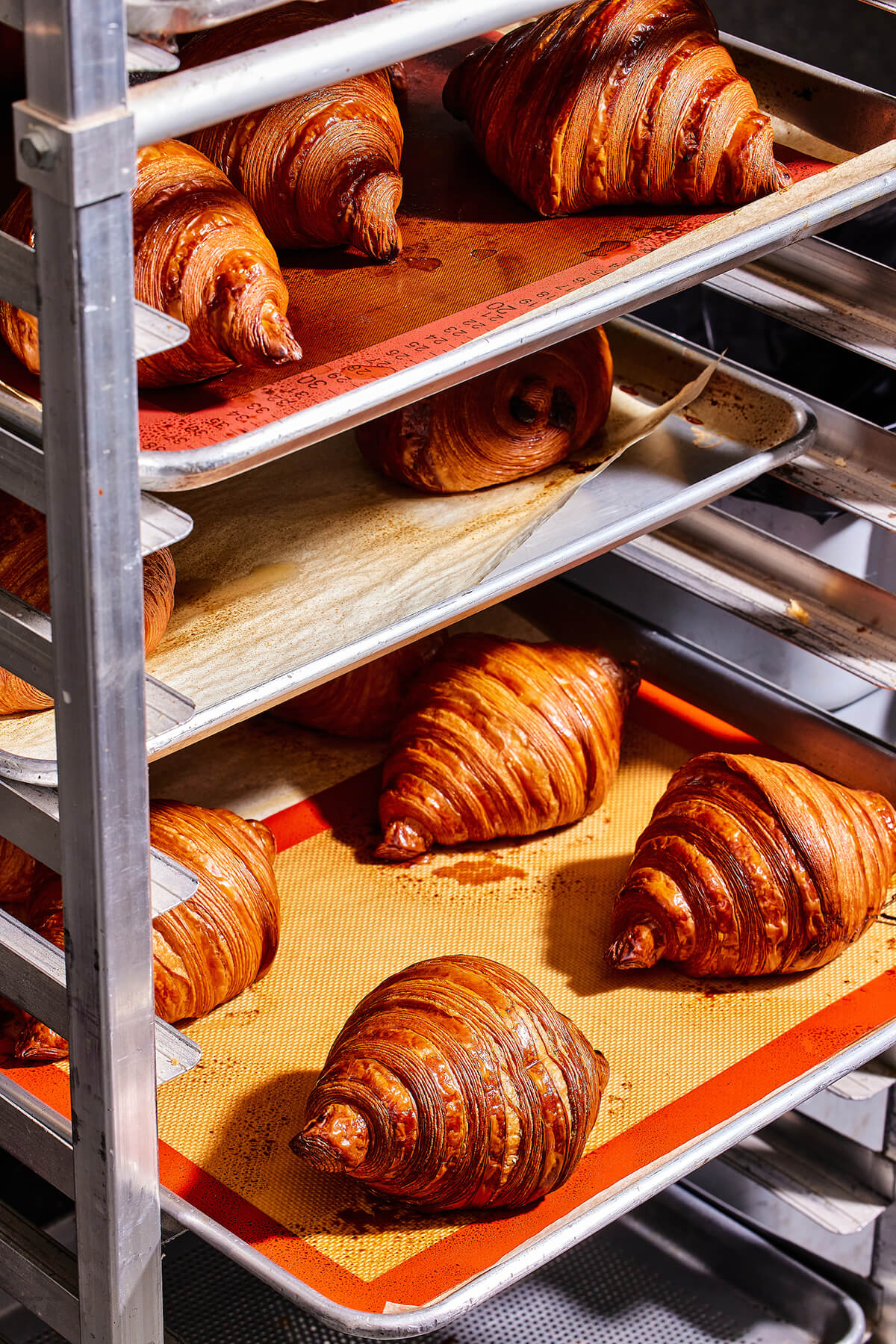
Soon the pair began selling the macarons at area farmers markets, eventually expanding their repertoire to include hand-cut marshmallows and a simple pound cake. “[People were] like, Who are you? Are you French? But then they’d try them,” says Sanchez.
After two years in California, the couple started thinking about opening a business—and moving back to Baltimore. “We knew that Baltimore didn’t offer [a dedicated macaron shop] at that time,” Sanchez says, “and I wasn’t done with Baltimore.” So they came back, found a corner rowhouse on Fleet Street in Fells—and, in 2018, opened Sacré Sucré.
At the start, the shop had a small menu: the macarons, which drove the business, éclairs, and tea, another of Thibodeaux’s interests. After lobbying from customers, they added an espresso menu and started making croissants, eventually buying a dough-laminating machine—an expensive undertaking, especially because, along with its owners being self-taught, Sacré Sucré is entirely self-funded. (Thibodeaux also sews Sacré Sucré’s Hedley & Bennett-style aprons himself.)
So there they were, open four days a week, making boutique pastries largely by hand and by themselves, selling eight croissants a day in a Baltimore rowhouse, and wondering how long they could survive.
“For the first two years, nobody came to our store,” says Sanchez, though neighbors would come in, buy a few things (special-occasion macarons, one of those eight croissants) and offer support. “And during those two years, I was in the kitchen, making stuff constantly. Dane was like, ‘Why are you making more product? We have no customers.’ And I was like, ‘Well, they’re gonna come. You just have to wait.’”
And then the pandemic hit, which, as it turned out, saved the business. “Once the masks came on and the doors opened,” says Thibodeaux, “we didn’t stop.” “I think there was a bakery wave in Baltimore, and in the U.S.,” says Sanchez, recalling the immediate aftermath of the COVID shutdown, when folks stayed home baking sourdough bread, watching The Great British Baking Show, and ordering from Grubhub.
“On the weekends,” says Sanchez, “we would have lines outside.”
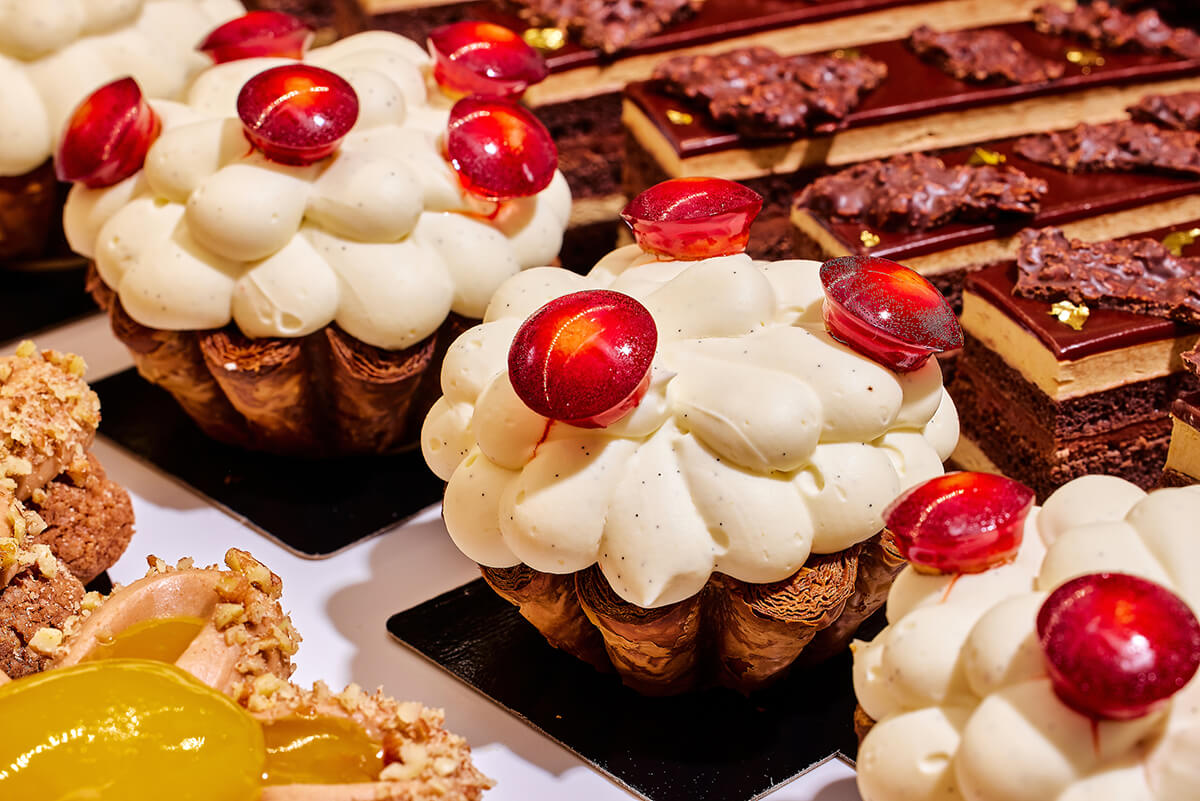
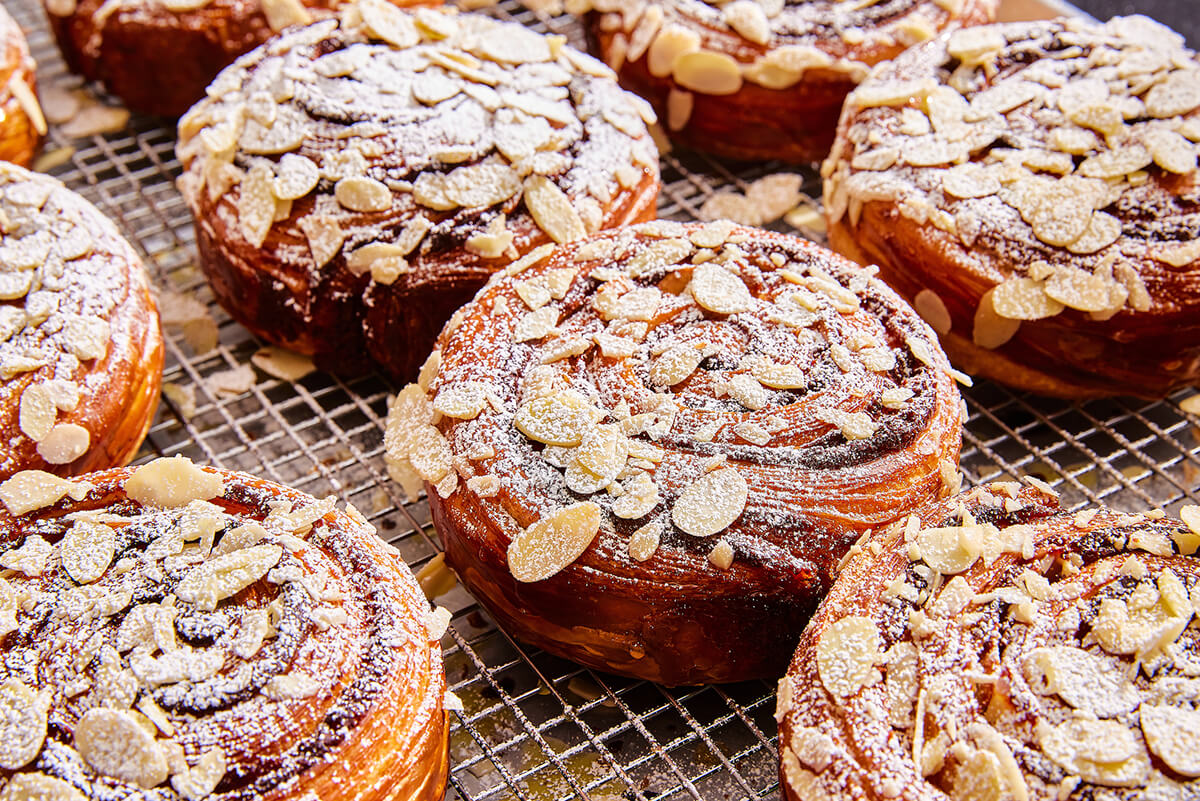
As business grew, so did the pastry case, as Sanchez and Thibodeaux added classic French confections like Paris-Brest, Ispahan, canelés de Bordeaux, Mont-Blanc, plus king cakes, galettes, and more, not to mention macarons in flavors like calamansi, matcha, and orangeblossom. It wasn’t long before they outgrew not only that case but the rowhouse.
With most of the production behind them that Wednesday morning, Thibodeaux heats the bowl of a metal teaspoon over a heat gun, then presses it into a row of cremeaux teardrops decorating more éclairs. He fills the cavities with house-made dulce de leche, then sets the tray of pastries out for the staff to take downstairs when the shop opens at 9 a.m.
Meanwhile, Sanchez, now wearing black Valrhona “chocolate gloves,” is affixing shards of white chocolate onto the mauve globes of cherry-blossom mousse that have become the Sakura petits gâteaux. Between the heat guns, pylon-orange immersion blenders the size of bowling pins, and the electric paint sprayer they use for egg-washing the croissants and pain au chocolat, the kitchen looks less like a quaint pâtisserie than it does the electrical aisle of a Home Depot.
The new Sacré Sucré expanded the available space, from 1,200 to 5,000 square feet, and includes a third floor with a massive walk-in cooler, an office, and a chilled room for the dough-laminating machine.
“THEY’RE THE GOLD STANDARD FOR AESTHETICS. THEY MAKE ABSOLUTELY BEAUTIFUL THINGS.”
Their staff has grown to a dozen, including Nicolas Tupin, a French pastry chef hired to help make the Viennoiserie. Born in Reims, outside of Paris, Tupin went to pastry school in Grenoble, worked for a dozen years in Miami, then moved to Baltimore to be closer to his wife’s family in Towson. He came to Sacré Sucré because “they bake everything from scratch. That’s really important,” he says, and not always the case in American bakeries. Having Tupin means that Thibodeaux and Sanchez have more time to work on their pastries, though “Manny and he fight over how long to bake the croissants,” says Thibodeaux, smiling.
Downstairs, the small crew of staffers have loaded the pastry case and fired up the espresso machines and the soft-serve ice cream machine, a new addition to the repertoire. The ice cream, in flavors like mango and pink grapefruit, is swirled into “croix-cones,” made from toasted halved croissants, and decorated with miniature pink macaron shells. (“Pierre Hermé puts them on his gelato, so I figured we can, too,” says Sanchez of the famed French pastry chef, who specializes in macarons.)
The shop is also now open at 7 a.m. on Mondays and Tuesdays, when the case is filled with scones, pound cake, and individual quiches, a homier menu that gives the customers a change of pace and the bakers a break from the more intricate pastry work.
“They’re the gold standard for aesthetics. They make absolutely beautiful things,” says Ovenbird Bakery’s Keiller Kyle of Sacré Sucré. Kyle not only knows something about making pastries, but also about jigsawing a bakery into an old Baltimore rowhouse.
“What they were doing in the [former] space they were doing it in—I have incredible empathy for that,” says Kyle, whose bakery first opened in Little Italy, until production outgrew the rowhouse basement and Kyle moved it to a larger space in Highlandtown. Kyle, like Sanchez and Thibodeaux, intentionally opened in an old-school Baltimore neighborhood—and in an old-school Baltimore building—rather than in an area more designed for shopping and tourism: Whitehall Mill, say, or Harbor East.
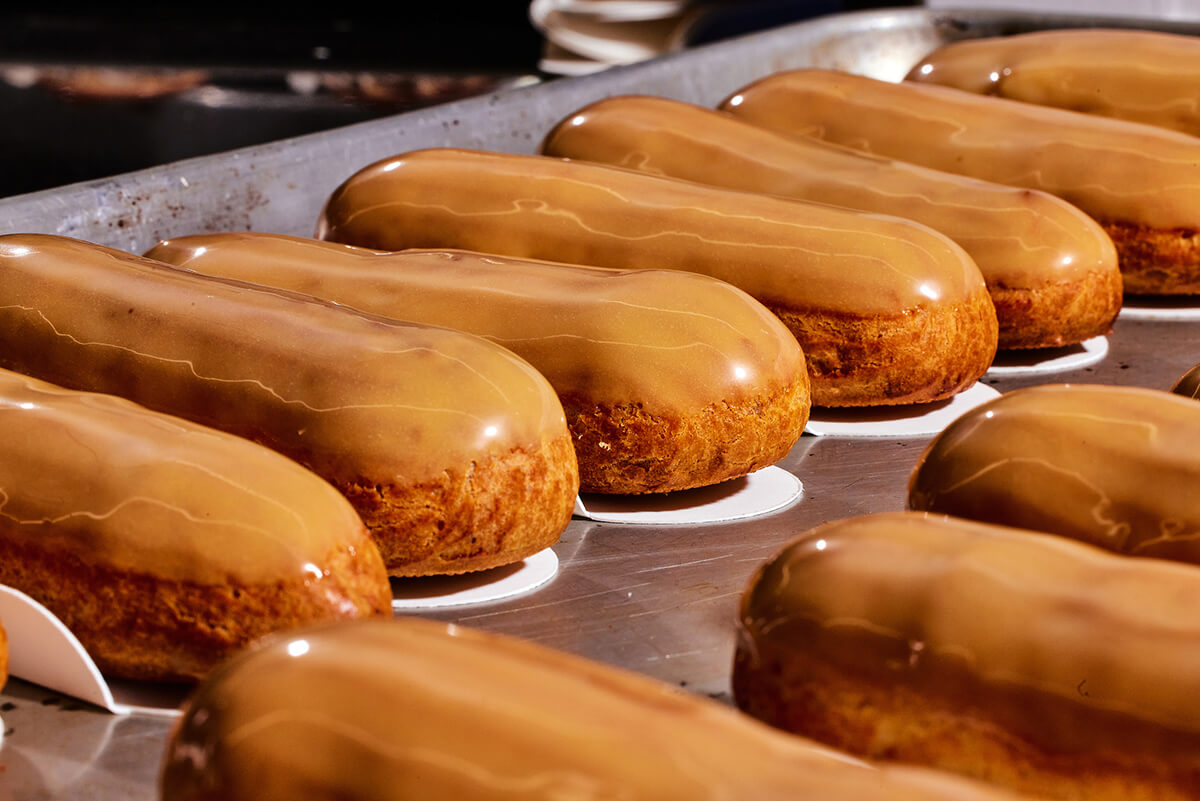
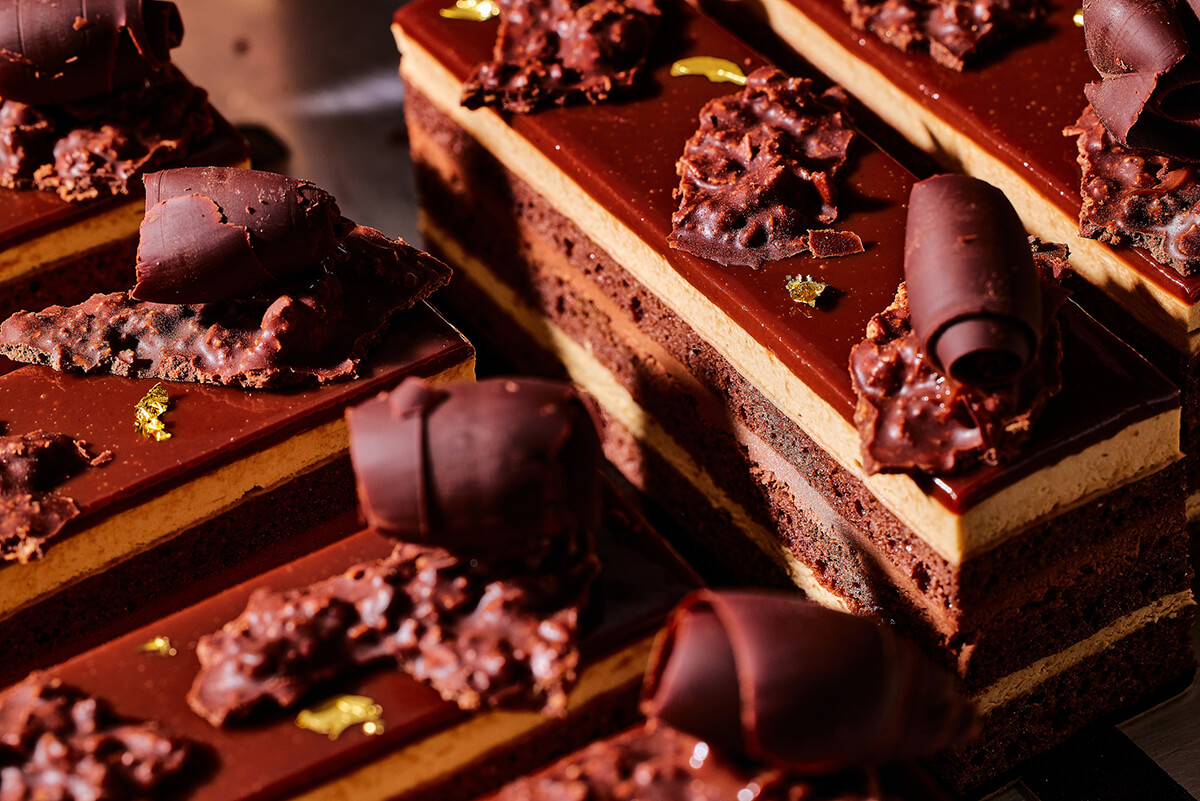
Not everyone has been as understanding of Sacré Sucré’s need for larger digs. Before they could open in January, the owners found themselves mired in a drawn-out fight with their new neighbor over plans to enlarge the pâtisserie’s second-floor kitchen (at issue is the neighbor’s garden view and historic-home property value).
Sanchez and Thibodeaux say this expansion is necessary for them to begin baking bread and making sandwiches for a lunch menu. What’s more, they note, the city approved the proposal. As the conflict played out, a neighborhood petition circulated against the bakery’s liquor license, which predated the pâtisserie but had been restricted when the location was a short-lived burger bar. (Before that, the location had been a tavern; Thibodeaux and Sanchez bought the building hoping to re-activate the liquor license and offer cocktails and natural wines with their desserts.) Then another petition circulated in favor of the bakery.
“We’re two people; we’re not H&S,” says Thibodeaux of the impasse, which is ongoing. “From worrying about croissants, now I’m going to get into politics? It’s a lot of things that we never thought about when we wanted a bakery,” says Sanchez.
The customers, at least, aren’t complaining. On Easter morning, the dining room was crowded with folks lining up for holiday pastries, including egg-shaped macarons in pastel colors.
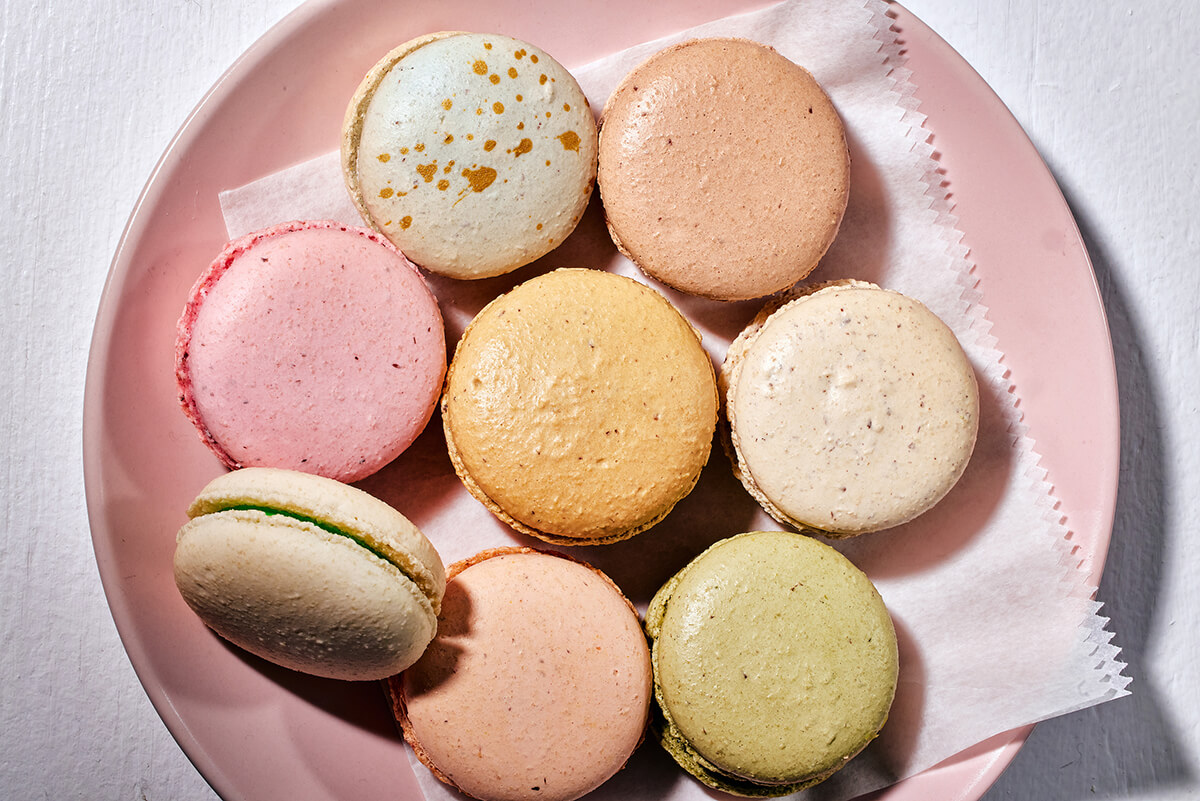
Boomer Kennedy, a retired auto mechanic from Patterson Park, was sampling a few of the confections. Kennedy had been one of Sacré Sucré first customers at the old location. “I went every day for a while; I couldn’t stay away,” says Kennedy. She appreciates the craftsmanship more than most, as she went to pastry school and was one of the opening pastry chefs at Bouchon, Thomas Keller’s lauded bakery in Yountville, California.
“The pastries aren’t too sweet, which is a really good sign,” she says. “They’re paying attention to taste; they don’t just seduce you with the sugar high.”
The promise of sweets may get you in the door, but it’s the technique, the mastery of flavors, and the artistry that have become the draw.
One look at the jewel-box pastry case—filled with vertical rows of confections in a palette of colors, many now shaped like spring flower—and that artistry is more than evident, a display that seems too pretty to eat, until you have a taste and, within moments, a faint trail of pastry flakes and meringue crumbs is all that’s left behind.